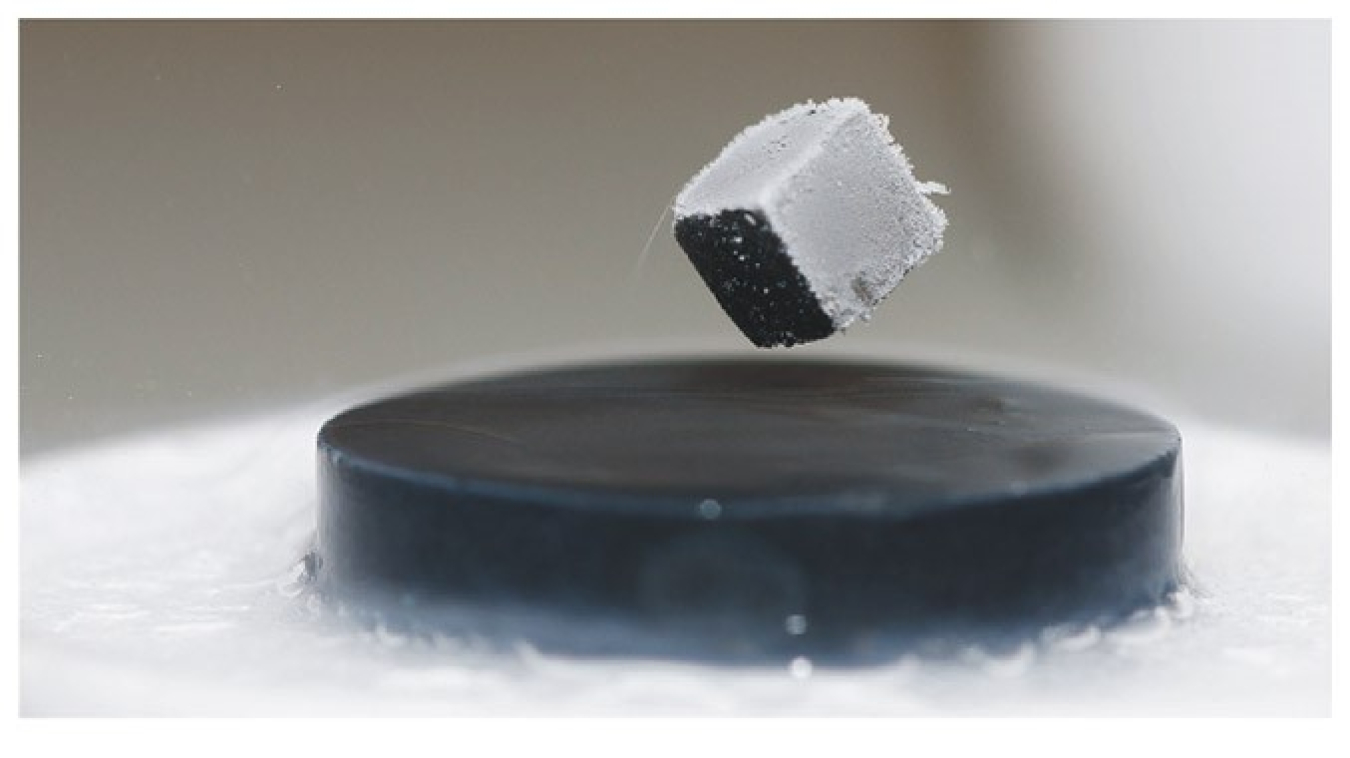
At what most people think of as “normal” temperatures, all materials have some amount of electrical resistance. This means they resist the flow of electricity in the same way a narrow pipe resists the flow of water. Because of resistance, some energy is lost as heat when electrons move through the electronics in our devices, like computers or cell phones. For most materials, this resistance remains even if the material is cooled to very low temperatures. The exceptions are superconducting materials. Superconductivity is the property of certain materials to conduct direct current (DC) electricity without energy loss when they are cooled below a critical temperature (referred to as Tc). These materials also expel magnetic fields as they transition to the superconducting state.
Superconductivity is one of nature’s most intriguing quantum phenomena. It was discovered more than 100 years ago in mercury cooled to the temperature of liquid helium (about -452°F, only a few degrees above absolute zero). Early on, scientists could explain what occurred in superconductivity, but the why and how of superconductivity were a mystery for nearly 50 years.
In 1957, three physicists at the University of Illinois used quantum mechanics to explain the microscopic mechanism of superconductivity. They proposed a radically new theory of how negatively charged electrons, which normally repel each other, form into pairs below Tc. These paired electrons are held together by atomic-level vibrations known as phonons, and collectively the pairs can move through the material without resistance. For their discovery, these scientists received the Nobel Prize in Physics in 1972.
Following the discovery of superconductivity in mercury, the phenomenon was also observed in other materials at very low temperatures. The materials included several metals and an alloy of niobium and titanium that could easily be made into wire. Wires led to a new challenge for superconductor research. The lack of electrical resistance in superconducting wires means that they can support very high electrical currents, but above a “critical current” the electron pairs break up and superconductivity is destroyed. Technologically, wires opened whole new uses for superconductors, including wound coils to create powerful magnets. In the 1970s, scientists used superconducting magnets to generate the high magnetic fields needed for the development of magnetic resonance imaging (MRI) machines. More recently, scientists introduced superconducting magnets to guide electron beams in synchrotrons and accelerators at scientific user facilities.
In 1986, scientists discovered a new class of copper-oxide materials that exhibited superconductivity, but at much higher temperatures than the metals and metal alloys from earlier in the century. These materials are known as high-temperature superconductors. While they still must be cooled, they are superconducting at much warmer temperatures—some of them at temperatures above liquid nitrogen (-321°F). This discovery held the promise of revolutionary new technologies. It also suggested that scientists may be able to find materials that are superconducting at relatively high temperatures.
Since then, many new high-temperature superconducting materials have been discovered using educated guesses combined with trial-and-error experiments, including a class of iron-based materials. However, it also became clear that the microscopic theory that describes superconductivity in metals and metal alloys does not apply to most of these new materials, so once again the mystery of superconductivity is challenging the scientific community.
DOE Office of Science & Superconductivity
The DOE Office of Science, Office of Basic Energy Sciences has supported research on high-temperature superconducting materials since they were discovered. The research includes theoretical and experimental studies to unravel the mystery of superconductivity and discover new materials. Even though a complete understanding of the quantum mechanism is yet to be discovered, scientists have found ways to enhance superconductivity (increase the critical temperature and critical current) and have discovered many new families of high-temperature superconducting materials. Each new superconducting material offers scientists an opportunity to get closer to understanding how high-temperature superconductivity works and how to design new superconducting materials for advanced technological applications.
Superconductivity Facts
- Superconductivity was discovered in 1911 by Heike Kamerlingh-Onnes. For this discovery, the liquefaction of helium, and other achievements, he won the 1913 Nobel Prize in Physics.
- Five Nobel Prizes in Physics have been awarded for research in superconductivity (1913, 1972, 1973, 1987, and 2003).
- Approximately half of the elements in the periodic table display low temperature superconductivity, but applications of superconductivity often employ easier to use or less expensive alloys. For example, MRI machines use an alloy of niobium and titanium.
Resources and Related Terms
- Basic Research Needs for Quantum Materials for Energy Relevant Technology
- Making Superconductivity Useful
- Basic Research Needs for Superconductivity
- Cracking the Mystery of Perfect Efficiency: Investigating Superconductors
- Science Highlight: Physicists Uncover the Secret Behind the Behavior of Unique Superconducting Materials
Scientific terms can be confusing. DOE Explains offers straightforward explanations of key words and concepts in fundamental science. It also describes how these concepts apply to the work that the Department of Energy’s Office of Science conducts as it helps the United States excel in research across the scientific spectrum.

